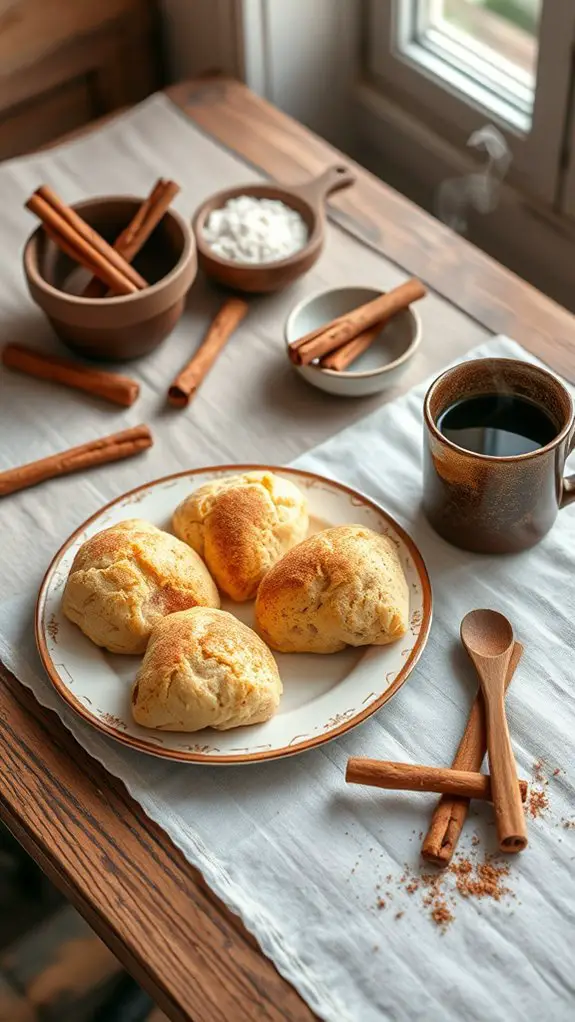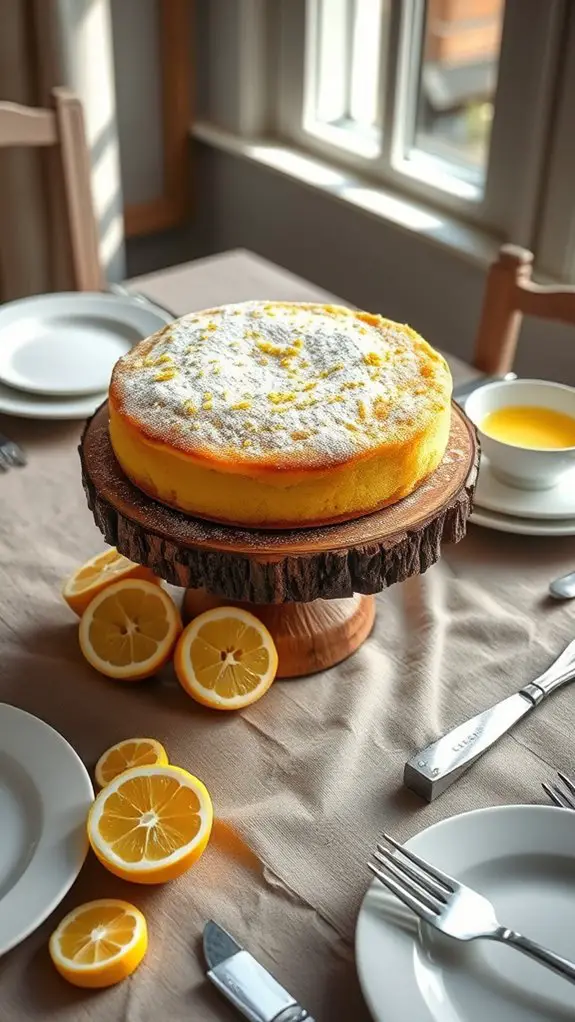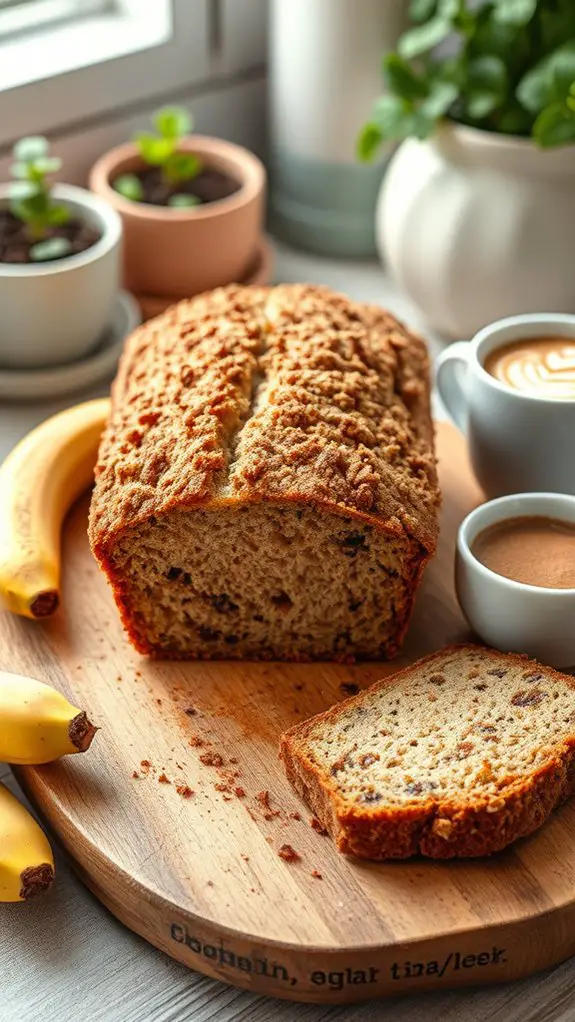Cinnamon Scones

Cinnamon scones may seem like a simple treat, but their layers reveal a rich history. Tender and flaky, they tantalize the senses with their warm aroma. Though originally humble, these pastries have evolved into a beloved delicacy. What secrets do they hold, and how can you savor them to the fullest? Explore the journey of cinnamon scones, from their origins to their modern-day indulgence.
History

Though the exact origins of the cinnamon scone remain elusive, its enduring popularity has cemented its place as a beloved staple in the world of baked goods.
Tracing back through the mists of time, the scone's roots can be found in the baking traditions of Scotland and England, where it evolved from simple unleavened breads into the tender, flaky treats that are recognized today.
Whether enjoyed alongside a steaming cup of tea or as a satisfying snack, the cinnamon scone's blend of warm spice and buttery goodness continues to delight, its timeless allure transcending the boundaries of its mysterious past.
Recipe

Cinnamon Scones are a classic breakfast treat that combine the warm, aromatic flavors of cinnamon with a flaky, buttery texture. These scones are perfect for a cozy morning or an afternoon tea. The key to achieving the perfect cinnamon scone is to work the dough gently and avoid overworking it, which can result in a tough, dense texture.
To begin, it's important to use high-quality, cold ingredients, as this will help create the desired flakiness in the scones. The use of cold butter and buttermilk is essential for this recipe.
- 2 cups (250g) all-purpose flour
- 1/4 cup (50g) granulated sugar
- 2 teaspoons baking powder
- 1/2 teaspoon baking soda
- 1/2 teaspoon salt
- 1/2 cup (115g) cold unsalted butter, cubed
- 3/4 cup (180ml) cold buttermilk
- 2 teaspoons ground cinnamon
Preheat your oven to 400°F (200°C). Line a baking sheet with parchment paper. In a large bowl, whisk together the flour, sugar, baking powder, baking soda, and salt.
Using a pastry cutter or your fingers, cut in the cold butter until the mixture resembles coarse crumbs. Stir in the buttermilk until a shaggy dough forms. Don't overmix.
Turn the dough out onto a lightly floured surface and gently knead a few times, just until the dough comes together. Pat the dough into a 1-inch thick round. Cut the round into 8 wedges and place them on the prepared baking sheet, spacing them apart.
Sprinkle the tops of the scones with the ground cinnamon.
Bake the scones for 15-18 minutes, or until they're golden brown on top. Allow the scones to cool on the baking sheet for a few minutes before serving.
Enjoy the warm, fragrant cinnamon scones with a cup of coffee or tea.
Nutritional Guide
Now that you've mastered the art of crafting delectable cinnamon scones, let's explore their nutritional profile.
These flaky, buttery, and tender treats boast a modest caloric content, with each scone containing approximately 200 calories.
The key ingredients, such as whole wheat flour, cinnamon, and honey, offer a host of benefits. Whole wheat flour is rich in fiber, which promotes digestive health, while cinnamon boasts anti-inflammatory properties. Honey, a natural sweetener, provides a touch of sweetness without the need for refined sugars.
Enjoy these nutritious cinnamon scones as a satisfying snack or pair them with your favorite beverage for a delightful indulgence.
Final Thought
As you savor the flaky, buttery, and tender cinnamon scones, let the delightful flavors transport you to a cozy, welcoming environment.
Baking tips like using chilled ingredients and a light hand will yield the best results. Experiment with flavor variations – add a touch of vanilla, swap in different spices, or incorporate dried fruits for a unique twist.
These scones are a versatile treat, perfect for breakfast, afternoon tea, or any moment you crave a comforting indulgence.
Enjoy the buttery, flaky goodness and let the cinnamon-infused aroma fill your senses, evoking a sense of warmth and contentment.





